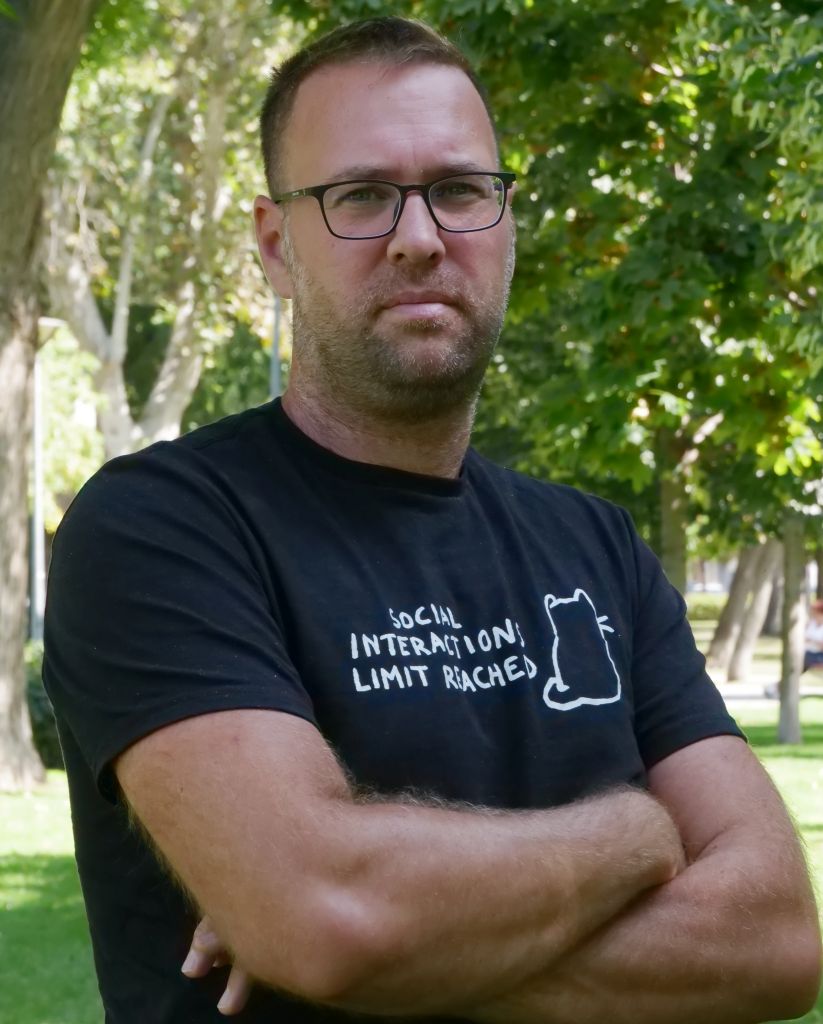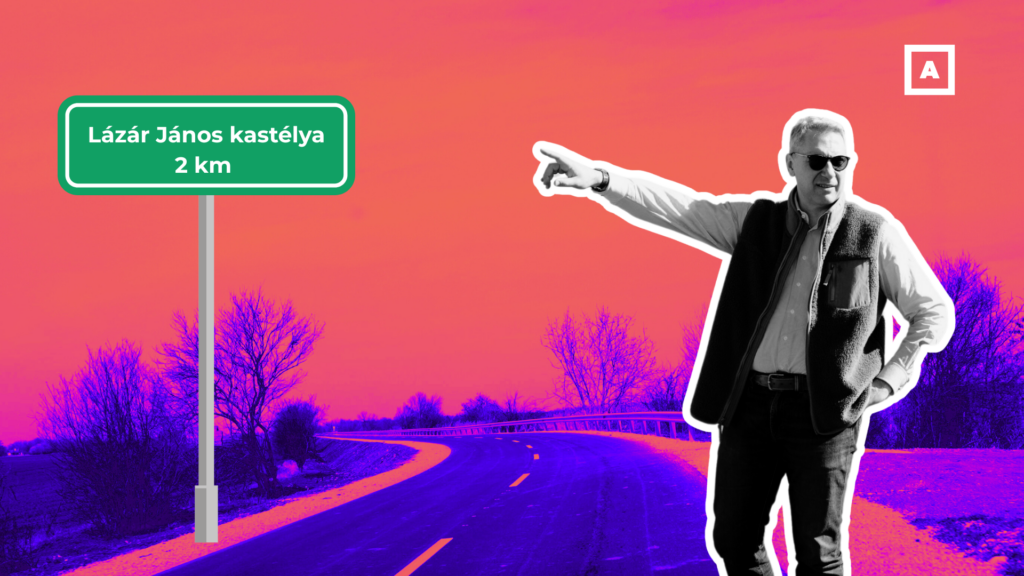The https://english.atlatszo.hu use cookies to track and profile customers such as action tags and pixel tracking on our website to assist our marketing. On our website we use technical, analytical, marketing and preference cookies. These are necessary for our site to work properly and to give us inforamation about how our site is used. See Cookies Policy
No road has been so thoroughly renovated as the one leading to the Construction Minister’s castle
Data we have requested from the national road maintainance firm shows that the so-called Hungarian Village initiative was laser-focused on the road leading to the mansion of Lázár János, Minister of Construction and Transportation. According to Lázár’s secretary of state, the renovations were necessary because a nearby prison’s administration requested them, however they refuse to show this supposed correspondence.
The municipality of Hódmezővásárhely, the National Command of the Prison Service, the extension of the bridge 47 – these are all used to explain the renovations of Road 4413. The simpler explanation however is that the road leads to the Batida castle owned by János Lázár, the Minister responsible for, among other things, the renovation of Hungary’s road network. Though sparsely used, somehow, renovating this section of road cost twice as much as other works under the Hungarian Road initiative, the government program used to renovate Road 4413.

János Lázár owns massive tracts of land near Hódmezővásárhely. The crown jewel of this estate is the large mansion in its center, built by a company that was also soon acquiered by Lázár. His relatives also purchased land in the area, and a hunting company Lázár has stakes in acquired exclusive hunting rights for twenty years on the largest hunting ground in Csongrád County.
Unlike other roads, which only got their surface levels replaced, Road 4413 was rebuild from the ground up – the state-owned firm facilitating road renovation, Magyar Közút Zrt. explained that this was needed because the ground there was particularly tough.
“Under the Hungarian Village initiative, full-scale road rehabilitation projects worth HUF 50 billion a year can be implemented on 89 sections, covering some 250 kilometers. The investments included in the first phase of the program have been launched on the national road network operated by our company in a scheduled manner,”
Magyar Közút Zrt. states on its website.
According to them,
“the experts will install a new base layer in the necessary places, the contractors will remove the bad pavement on the surfaces that have lost their load-bearing capacity locally and install a new load-bearing track structure. Following the replacement of the base, a levelling layer will be laid to remove any unevenness in the existing pavement and a new wearing course will be laid on top. They will also carry out the necessary works along the roadside, such as cleaning ditches, restoring drainage, installing new traffic signs and, of course, new pavement markings on the new wearing course at the end of the project.”
Opaque construction
The 50 billion HUF price means that the average cost for renovating a kilometer of road was 200 million HUFs in 2019, the start of the Hungarian Village initiative. Due to inflation, this cost went up quite a bit by 2024: ongoing renovations cost around 300 million HUFs per kilometer.
The price for road 4413 exceeded even this inflation-adjusted cost.
It was renovated for 500 million HUFs per kilometer, thus the costs totaled at a gross 3.3 billion HUFs for the 6 kilometer stretch leading to the Batida Castle.
We submitted a freedom of information request to Magyar Közút Zrt, asking what roads were renovated and how thoroughly. We received a table, which seemingly contained no earthwork replacement projects, which would describe the renovation of Road 4413
We asked again which of the 114 road reconstruction projects in the list of the Hungarian Village Initiative Phase I is similar in technical content to the Batida road. They replied that ‘in the southern part of the country, in the counties of Csongrád-Csanád and Békés, there are areas with a bounded, variable-volume subsoil where there are sections of road such as Road 4413. The technical content of each project is always adapted to the specific reconstruction needs of the road section concerned.” In other words, no specific road was mentioned, only generalities.
Not necessary for bridge project
Magyar Közút Zrt. also wrote to Átlátszó that Road 4413’s
“comprehensive renovation is necessary because the Tisza Bridge in Algyő requires operation and maintenance work until the development works are completed, for example, the last time pothole removals were carried out on 10 October 2024, which were carried out with half-lane restrictions. Considering the traffic on the road, even this type of work can cause significant congestion. Once the road 4413 has been reconstructed, it may become an alternative route, allowing road users to choose to wait or take a detour. This means that the bypass can be given a new function even before the main road is upgraded.”
The bridge’s extension has been in plans since at least 2007. when a study was commissioned on the feasibility of such a project. The plans do not recommend the use of Road 4413 as a bypass during construction, which would have to be connected to the highway network, which would become congested, via an underpass. This however has not yet been built.
Meanwhile, Magyar Közút has also reconstructed the road parallel to the 4413. They wrote that “thanks to the funds of the Hungarian Village Initiative, the construction of the more than 7 km section of the bypass 4414 from the M43 motorway is being carried out by our company’s own engineering experts, using nearly 8,600 tons of asphalt.”

Google Maps does not recommend drivers to take the Batida road, as the other way is easier when taking a detour to avoid the bridge.
This road would be a practical bypass in case of construction of the Tisza bridge in Algyő: according to Google, the distance between Szeged and Hódmezővásárhely would be 36.7 kilometres on this road, and 39 kilometres on the 4413.
When asked about this project, Magyar Közút deflected to the Municipality of Hódmezővásárhely. “Hódmezővásárhely has previously announced its intention to apply for the renovation of the section closer to Hódmezővásárhely in the framework of the Operational Programme for Regional and Urban Development “Sustainable Competitive Urban Development”. Thus, the municipality can provide further information on the continuation of the road reconstruction” – they replied.
Reconstruction 24 years in the making
Moreover, the now-renovated 4413 road to Batida Castle is separated from Highway 47 by several kilometers of extremely bad road. The pavement was damaged during the floods of 2000 and has not been reconstructed yet.
Magyar Közút wrote to Átlátszó that “the reconstruction works can continue in the future on Road 4413, we already have a design plan for the reconstruction of the section between the main road 47 and the access road to the National Penitentiary Institute in Nagyfa.”
The prison was mentioned by State Secretary Péter Ágh in a debate with opposition MP Ágnes Vadai about Road 4413. Replying to criticism over the cost and unnecessity of the renovation, he said that the road is the only one through which the prison can be reached, and it was in a dangerous condition for years. Because of that “the penitentiary administration has repeatedly requested the reconstruction of the road, which is now taking place.”
In truth, the prison in Nagyfa can be approached from two directions, this has been the case for decades.
In September last year, we have submitted a freedom of information request to the Ministry of Construction and Transportation, asking to see the correspondence confirming that the “prison service had already requested the reconstruction of the road section, which is now being carried out.” So far, we have received no reply.
Written by Csaba Segesvári, translated by Zalán Zubor. The Hungarian version of this story is here. Reconstruction on the M44 highway (Photo by the author.)

